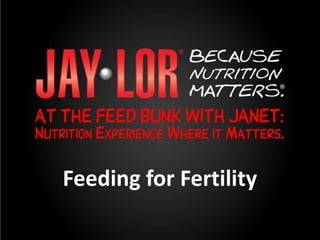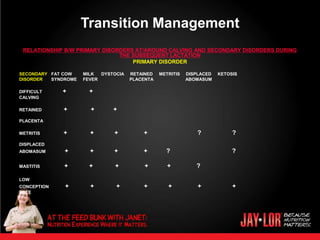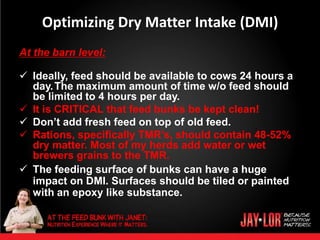The document discusses how proper nutrition and management around the dry period and transition into lactation can optimize reproductive efficiency in dairy cows by maintaining body condition score, maximizing dry matter intake, balancing protein and minerals, and avoiding metabolic disorders linked to reduced fertility. It provides specific feeding recommendations for close-up dry cows, transition cows, and lactating cows to support reproductive health and performance.


































